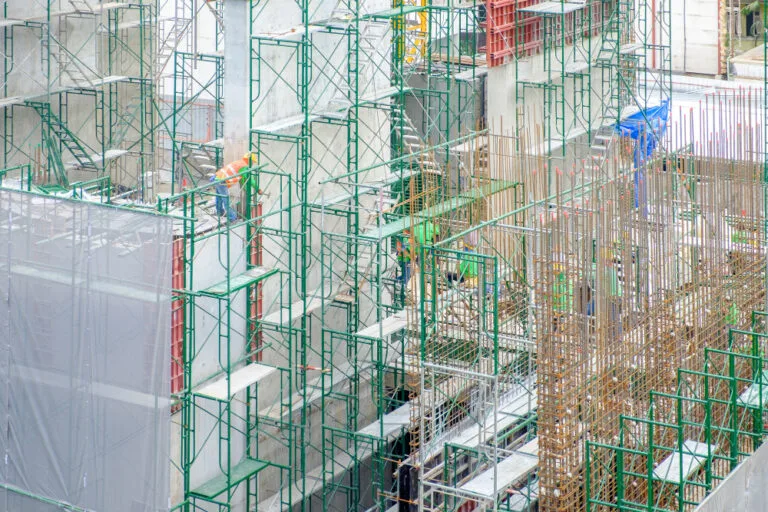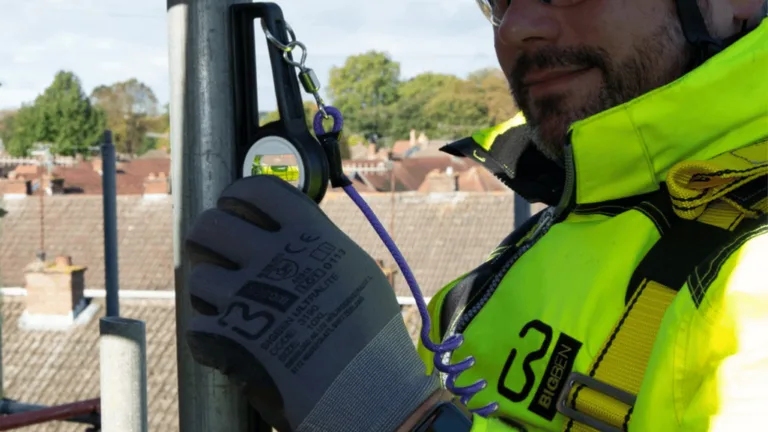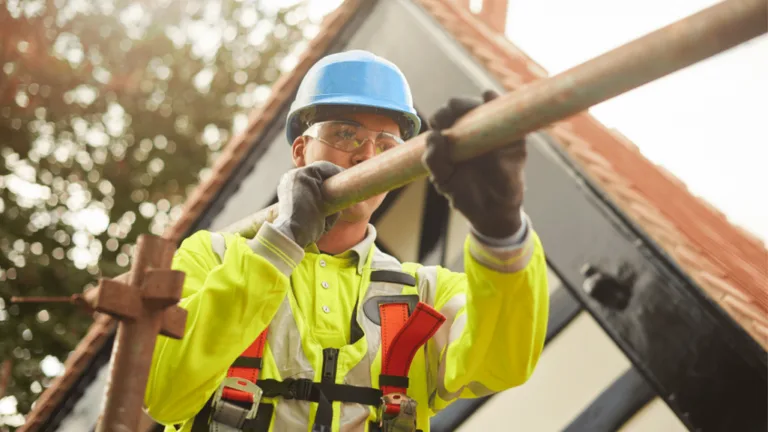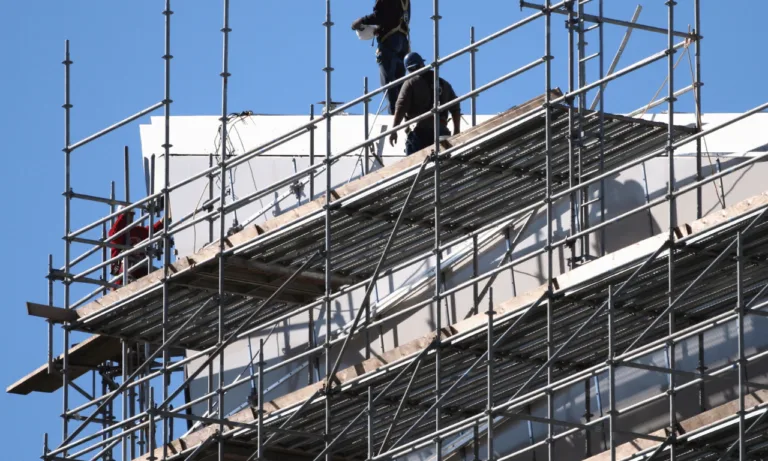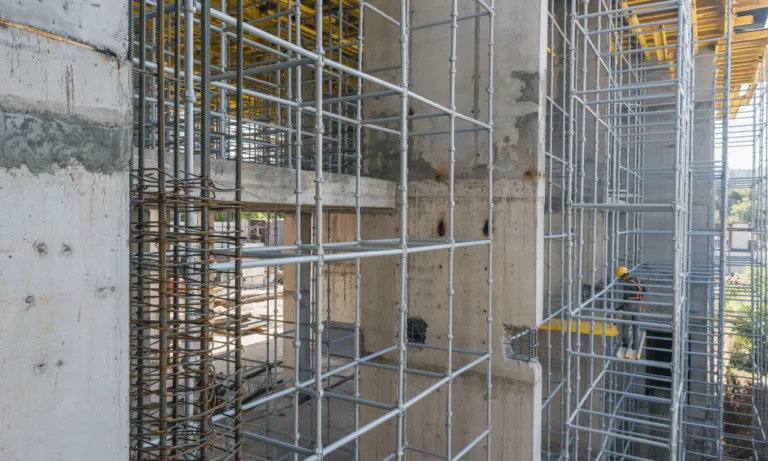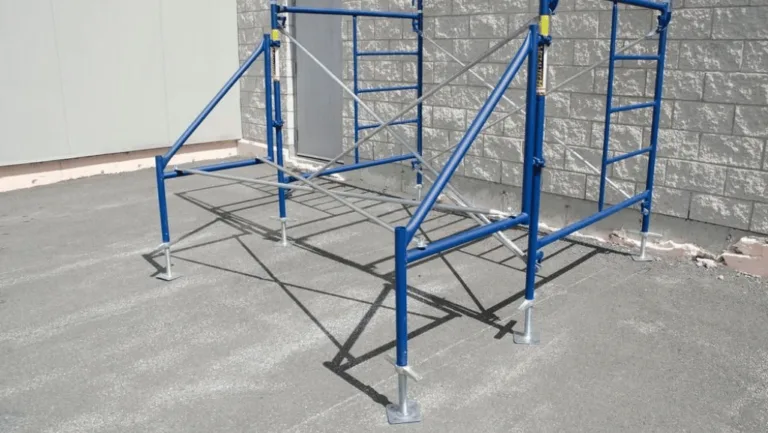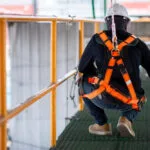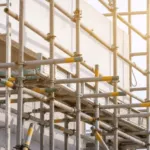Phone:
(+65)8319-0742
When it comes to ensuring safety at construction sites, proper scaffold inspection is crucial. But who exactly is authorized to carry out such inspections? In this article, we will explore the qualifications and requirements for individuals who are authorized to inspect scaffolds. From the importance of scaffold inspector certification to understanding OSHA scaffold inspection requirements, we will provide you with valuable insights into the world of scaffold safety inspections.
Key Takeaways:
- Scaffold inspections require individuals with specific qualifications and training.
- Scaffold inspector certification is essential for ensuring competency in conducting inspections.
- OSHA sets specific requirements and guidelines for scaffold inspections.
- Complying with OSHA regulations is crucial for maintaining safe worksites.
- Quality scaffold safety inspector training is necessary to develop the skills and knowledge required for effective inspections.
Scaffold Inspector Certification and Qualifications
When it comes to ensuring the safety of scaffolds on construction sites, having a qualified scaffold inspector is crucial. These individuals play a vital role in examining and evaluating scaffolding structures to identify potential hazards and ensure compliance with safety guidelines.
To become a qualified scaffold inspector, specific certifications and qualifications must be obtained. One of the essential qualifications is being recognized as a competent person for scaffold inspection. A competent person is an individual who has the knowledge, experience, and training necessary to identify and eliminate hazards related to scaffolding.
Competent persons for scaffold inspection are required to follow specific guidelines when assessing scaffolding structures. These guidelines include conducting thorough visual inspections, examining scaffold components, and identifying any deficiencies or issues that may compromise safety.
These inspectors must possess a deep understanding of scaffold inspection guidelines, which are designed to ensure the safe design, erection, use, and dismantling of scaffolding systems. By adhering to these guidelines, qualified scaffold inspectors contribute to creating a safe working environment for construction workers.
Key Qualifications for Scaffold Inspectors
To become a qualified scaffold inspector, individuals must meet certain qualifications and requirements. These qualifications may include:
- Completion of a recognized scaffold safety training program
- Acquisition of necessary certifications, such as the OSHA scaffold safety certification
- Demonstration of extensive knowledge and experience in scaffold construction and use
- Ability to identify potential hazards and determine the appropriate measures to mitigate risks
Additionally, scaffold inspectors should have excellent communication skills to effectively communicate any identified issues or concerns to the relevant parties involved, such as site supervisors, project managers, or construction workers.
The Importance of Qualified Scaffold Inspectors
Having qualified scaffold inspectors is crucial for maintaining safe worksites. They play a critical role in preventing accidents, injuries, and even fatal incidents related to scaffolding structures.
By having a competent person for scaffold inspection evaluate and assess scaffolds, potential hazards can be identified and rectified before accidents occur. Qualified scaffold inspectors not only ensure compliance with safety regulations but also contribute to the overall success of construction projects by promoting a safe and secure work environment.
| Benefits of Qualified Scaffold Inspectors |
|---|
| Enhanced safety for workers |
| Prevention of accidents and injuries |
| Compliance with safety regulations |
| Reduced liability for employers |
| Improved productivity and efficiency |
OSHA Scaffold Inspection Requirements
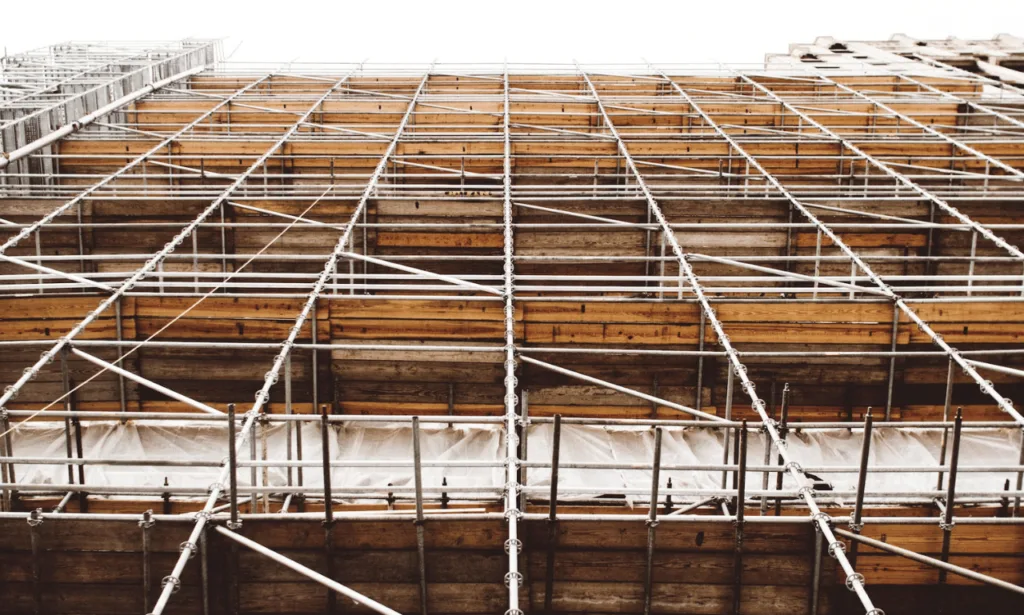
When it comes to scaffold inspections, it is crucial to adhere to the specific requirements set by the Occupational Safety and Health Administration (OSHA). By following these guidelines, you can ensure the safety of workers and maintain compliance with OSHA regulations.
OSHA scaffold inspection requirements encompass a comprehensive checklist that outlines the necessary steps to evaluate the condition and stability of scaffolding structures. This checklist serves as a valuable tool for inspectors to assess potential hazards and mitigate risks.
Key Components of a Scaffold Inspection Checklist
A scaffold inspection checklist typically includes the following essential elements:
- Scaffold structure integrity
- Platform condition and stability
- Guardrail system effectiveness
- Access points and ladder safety
- Fall protection equipment
- Proper use of personal protective equipment
- Loading capacity
- Debris removal and housekeeping
Inspectors must thoroughly evaluate each of these components to ensure compliance with OSHA regulations and identify any potential safety hazards. By conducting a comprehensive inspection, inspectors can detect issues early on and take appropriate measures to address them.
It is important to note that scaffold inspections should be conducted by qualified individuals who have received proper training and possess the necessary expertise. This ensures that inspections are carried out accurately and effectively, reducing the risk of accidents or injuries.
Achieving Compliance with OSHA Regulations
Complying with OSHA scaffold inspection requirements is essential for maintaining a safe work environment. By following the scaffold inspection checklist and conducting regular inspections, employers can identify potential hazards, implement necessary measures, and protect the well-being of workers.
Beyond meeting OSHA requirements, it is crucial to prioritize ongoing training and education for scaffold safety inspectors. Staying updated with industry best practices and regulations empowers inspectors to make informed decisions and contribute to a culture of safety on construction sites.
By upholding OSHA scaffold inspection requirements, employers and inspectors play a vital role in enhancing workplace safety and preventing accidents. They contribute to the overall well-being of workers and promote a culture of diligence when it comes to scaffolding operations.
| Component | Inspection Guidelines |
|---|---|
| Scaffold structure integrity | Evaluate the stability, support, and condition of the scaffold structure. |
| Platform condition and stability | Check the platform for any damage, deformation, or signs of instability. |
| Guardrail system effectiveness | Ensure that the guardrails are properly installed and provide adequate fall protection. |
| Access points and ladder safety | Assess the condition of access points and ladders, ensuring they are secure and provide safe entry and exit. |
| Fall protection equipment | Inspect the usage and condition of fall protection equipment, such as harnesses and lifelines. |
| Proper use of personal protective equipment | Verify that workers are utilizing the appropriate personal protective equipment, including hard hats, safety goggles, and gloves. |
| Loading capacity | Determine the scaffold’s maximum load capacity and ensure that it is not exceeded. |
| Debris removal and housekeeping | Ensure that the scaffold and its surrounding area are free from debris, promoting a safe and organized worksite. |
Scaffold Safety Inspector Training
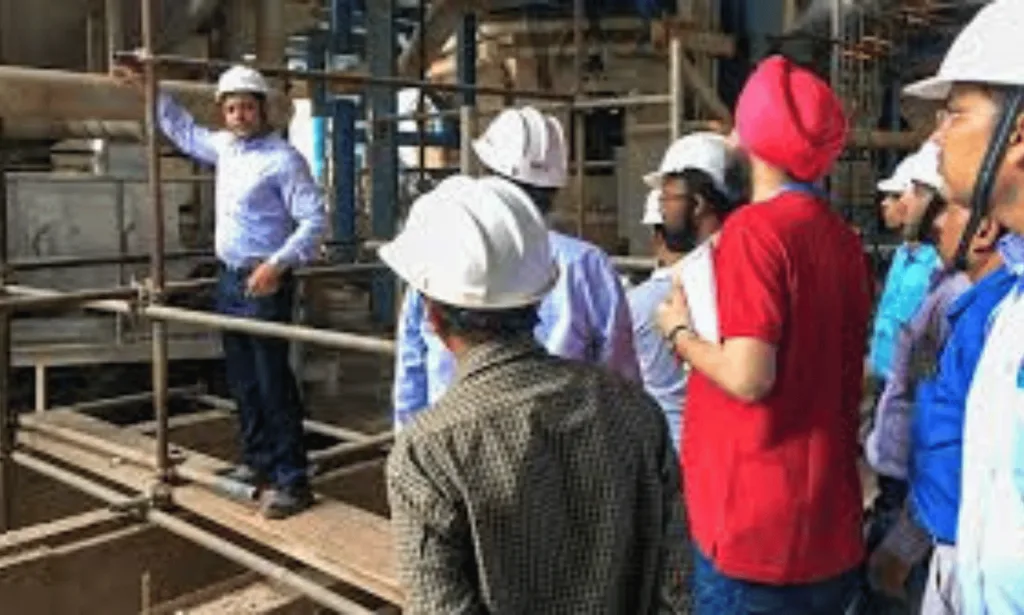
When it comes to ensuring the safety of workers on construction sites, properly trained and qualified scaffold safety inspectors play a vital role. These individuals have undergone specific training and acquired the necessary qualifications to carry out thorough scaffold inspections and identify potential hazards.
The process of becoming a certified scaffolding inspector involves a combination of education and practical experience. While the exact requirements may vary depending on the jurisdiction, most programs emphasize the need for comprehensive knowledge of scaffold safety standards, regulations, and best practices.
Scaffold safety inspector training programs typically cover a wide range of topics, including:
- Scaffold types and configurations
- Load capacity calculations
- Proper scaffold assembly and dismantling
- Inspection procedures and documentation
- Recognizing and addressing common scaffold hazards
These training programs may be offered by reputable organizations, such as the Occupational Safety and Health Administration (OSHA) or industry associations. They often include a combination of classroom instruction, hands-on exercises, and practical assessments to ensure that aspiring inspectors have a comprehensive understanding of scaffold safety.
Furthermore, ongoing education and professional development are essential for certified scaffolding inspectors to stay updated with the latest industry standards and regulations. This continuous learning ensures that inspectors maintain their competence and provide the highest level of safety assurance on construction sites.
Benefits of Hiring a Certified Scaffolding Inspector
Employers who prioritize the safety of their workers understand the value of hiring certified scaffolding inspectors. These professionals possess the knowledge, skills, and experience to perform accurate inspections, identify potential risks, and recommend appropriate safety measures.
By working with certified inspectors, employers can:
- Comply with regulatory requirements: Certified inspectors are well-versed in the scaffold inspection qualifications mandated by OSHA and other regulatory bodies.
- Maintain a safe work environment: Inspections conducted by certified professionals help minimize the risk of scaffolding accidents and subsequent injuries.
- Enhance worker confidence: When workers know that their safety is a priority, they are more likely to focus on their tasks and perform at their best.
- Prevent costly penalties and legal issues: Non-compliance with scaffold safety regulations can result in fines, legal liabilities, and damaged reputation.
Ultimately, investing in scaffold safety inspector training and hiring certified scaffolding inspectors is a proactive approach to ensuring workplace safety. It demonstrates a commitment to protecting the well-being of workers and promoting a culture of safety in the construction industry.
| Skills and Qualifications of a Certified Scaffolding Inspector |
|---|
| Thorough understanding of scaffold safety regulations |
| Knowledge of various scaffold types and their configurations |
| Ability to calculate load capacities and identify potential risks |
| Proficiency in inspecting scaffold assemblies and recognizing hazards |
| Excellent communication and documentation skills |
| Attention to detail and a commitment to precision |
| Continued professional development to stay up-to-date |
Conclusion
In conclusion, the importance of having authorized and qualified individuals inspect scaffolds cannot be overstated. By ensuring that inspections are carried out by competent and certified scaffold inspectors, construction companies can maintain safe worksites and comply with OSHA regulations.
Throughout this article, we have explored the qualifications and requirements for scaffold inspectors, the specific guidelines and checklist set by OSHA for scaffold inspections, and the necessary training and qualifications for individuals to become certified scaffolding inspectors.
By having a competent person perform regular scaffold inspections, construction companies can identify potential hazards, prevent accidents, and create a safe working environment for their employees. This not only reduces the risk of workplace injuries but also helps to avoid legal consequences and financial losses.
In conclusion, by prioritizing the proper certification and training of scaffold inspectors, construction companies can ensure the highest level of safety and compliance in their operations. Investing in qualified individuals to perform scaffold inspections is a proactive step towards creating a culture of safety and protecting the well-being of all workers involved in construction projects.
FAQ
Who is authorized to inspect a scaffold?
Authorized individuals who can inspect scaffolds include competent persons who have received formal training and certification as scaffold inspectors. These individuals possess the necessary knowledge and expertise to assess scaffolding structures for compliance with safety regulations and standards.
What qualifications are required to become a certified scaffold inspector?
To become a certified scaffold inspector, individuals need to possess the relevant qualifications and meet specific criteria. This includes completing a recognized scaffold inspector training program, acquiring knowledge of scaffold inspection guidelines, demonstrating competency in conducting inspections, and obtaining certification from a reputable organization or authority.
What are the OSHA scaffold inspection requirements?
OSHA has specific requirements for scaffold inspections to ensure worker safety. These include conducting regular inspections by a competent person, creating a scaffold inspection checklist, evaluating key components such as scaffold stability, guardrails, and access points, addressing any identified hazards promptly, and keeping records of inspections and any necessary corrective actions.
How can I receive scaffold safety inspector training and become a certified scaffolding inspector?
To receive scaffold safety inspector training and become a certified scaffolding inspector, individuals can enroll in courses offered by reputable training organizations. These courses cover topics such as scaffold types, assembly and disassembly procedures, inspection methods, and regulatory compliance. Successful completion of the training program, along with meeting any additional requirements, can lead to certification as a scaffold inspector.



